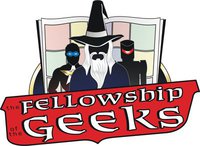Mettam & Huddleston Discover “Missing Linx”

Original Article HERE
by Steve Sunu, Staff Writer Comic Book Resources
All humanity has seen of them are blurry photos and secondhand accounts — until now. This April, Viper Comics brings the missing links of humanity to comics in an original graphic novel as the “Missing Linx,” the world’s newest premiere super-team. Together, Bigfoot, Yeti, Sasquatch and Skunk Ape fight off mythical creatures from other dimensions while thwarting the nefarious schemes of the evil Dr. Erasmus Q. Bedfellow, who seeks to destroy the world for his own personal gain. Along the way, the Linx encounter a human family — a father and his two teenage sons — who aid the team in their quest to defeat Bedfellow and restore order to the planet.
Bringing the Missing Linx to life are writer Dale Mettam and artist Courtney Huddleston who readers might recognize from their webcomic, “Luci Phurr’s Imps: A Children’s Story for Grown-Ups.”
CBR News spoke with Mettam and Huddleston and filled in our own missing links on the team’s roster, how the project came to Viper and some of the challenges they faced in revealing these beasts of legend to the world.
CBR News: Dale, what can you tell us the story behind “Missing Linx?”
Dale Mettam: These guys are the legends we all know about. There always seems to be just enough evidence to leave us thinking, “Y’know, there could be something to this,” but never enough to be completely convincing.
And then naturally you start — well, if you’ve got the same kinda mentality I do — you start to think, why? Sure, there’re the obvious reasons. These are incredibly rare wild creatures who simply avoid human contact as much as possible. But that’s kinda boring. What if they’re secretly heroes, working behind the scenes, for the betterment of mankind? Now that’s a story I’d like to read. Next thing you know, you have Bigfoot, Yeti, Sasquatch and Skunk Ape saving the day.
Courtney, how did you get involved in “Missing Linx?”
Courtney Huddleston: I’ve known Jessie (over at Viper) for a while, and we had done some stuff together. He pitched the idea of “Missing Linx” to me, and I thought it would be a lot of fun to draw. I was wrong — it was more than a lot of fun to draw!
Dale, who are the main characters of the team and what can you tell us about them?
Mettam: Bigfoot is the leader. He’s got a very strong sense of right and wrong and when he gives you his word, you can take it to the bank. I also thought it would be funny if he also had an accent you might hear from a New Jersey Longshoreman. Next, you have Skunk-Ape. He’s the brains of the outfit. Sure, he has a slight personal hygiene problem, but I’m sure we’ve all met that big-brain guy with the incredible I.Q. who can’t seem to work a stick of deodorant. Then you have Sasquatch, who’s the muscle of the team. He’s not the brightest bulb, but he’s always there when you need him. Rounding out the team is Yeti. He’s the hothead of the team — kinda like the baby brother who always wants to prove himself.
Courtney, what was your design process for each of the main characters? What kind of research, if any, did it involve?
Huddleston: I actually had done some research a while back, when I did a short entry in Viper Comic’s “Sasquatch” anthology. I just worked off of that material as I designed each “Missing Linx” character and made sure to differ them based on what the script asked for. Dale, you explained where the story originated, but how did it end up at Viper as opposed to becoming a webcomic or settling with another publisher?
Mettam: Projects I’ve done with Viper tend to fall into two categories. Some are my pitches and others come from Viper. This was one of the latter kind. They usually involve a chat, which goes, “Hey, Dale, we were kicking around an idea about (insert something here that’s weird, like masked luchadores non-powered super heroes or urban legends that save the world) want to write a book about that?” I ponder this for two, sometimes as long as four seconds before saying, “Yeah, sounds fun.” This is then followed by, “Have fun. Do what you want. Here’s the deadline for the script.”
That’s what happened here.
The villain, Dr. Erasmus Q. Bedfellow, seems to have a huge vendetta against the Missing Linx. What’s his story and why does he hate our heroes so much?
Mettam: First off, I had seen lots of “mad scientist” type villains, and this the first time I have really done one. So I decided to go all out. This guy is nuts. He’s like the guy from “Fringe,” drifts off on a tangent but usually he’s shouting and evil. So part of his fixation is based on nothing other than his own slipping grasp on reality. But he’s also responsible for our heroes coming through from the “fantasy dimension” in the first place. Of course, our heroes wouldn’t bend to his evil will, [leading to] his second attempt to open a portal to that dimension and bring through all manner of fantastical creatures to use in his mad, world conquering plans.
Why choose the four characters that you did? Was there a method behind your madness?
Mettam: This was actually part of the package that came from Viper. If I had felt strongly enough about a character that I didn’t want that one, or I wanted someone else, I could made that change, but this team seemed to work, once I’d given them all their own personalities.
Can you take us through your collaborative process?
Mettam: We’ve worked together on several other projects — the biggest being Luci Phurr’s Imps — so we have a pretty good groove when we start. I like to get Courtney’s sketches to see what he is thinking. But sometimes, we’ll just bounce a few ideas back and forth. Sometimes I might want a specific prop or element that will be in the plot, but I also like to riff on his designs. I like it when he adds a detail in the mix and it’s just something throwaway for him. I can take that and make it something bigger or more central to the plot. There’s a very free and easy give and take. We’re both looking to make the best thing possible, so we often scrap several ideas along the way before we hit something we both know we can’t top.
Huddleston: It’s really hard to explain. There’s a lot of throwing ideas back and forth, mixed with a few sketches for approval or sheer hatred — depending heavily on whether Dale is working on an empty stomach or not. Seriously though, we often times don’t work on projects in the traditional sense. I don’t just get the script and draw. We go back and forth on everything, from the script to the dialogue, until both parties are happy.
Dale, why do you think Courtney’s art lends itself well to the story you’re trying to tell?
Mettam: If you’ve seen his art, you know the answer to that. I’ve seen him do stuff that’s more realistic, and I have seem him do things that are very loose and cartoony. The common element in there is the expressive nature of the designs. There are times when I look at his sequential art and my script, and I want to slash the words. He’s done, in one small panel of art, what I had 50 words of dialogue to nail. What I really like is [the way] Courtney’s artwork lends itself to any story I’m working on. Genre is not what defines his style.
Huddleston: Dale tends to write toward my strengths, so it makes it a lot easier for my art to automatically mesh [with his scripts].
In addition to the four main beasts of urban legend, the book also features cameos from a number of mythical creatures and beasts.
Mettam: Well, a key story element is a breach in the wall between our reality and the fantasy dimensions, so you have all manner of things. From Greek Mythological elements to European “wee folk.” Because these are all fantasy creations, they all come from a common place.
Courtney, what was your favorite part of illustrating “Missing Linx?”
Huddleston: The variety. There was so much to choose from. Spaceships, giants, evil pixie characters, sea serpents and so much more.
What do you think was most challenging about doing a story like this?
Huddleston: It was all pretty easy. Again, Dale tends to play to my strengths when he writes. So by the time we started moving forward, everything felt comfortable for me.
Mettam: Trying to make sure the fun comes through. It’s easy to lose the plot in the fun. Or bury the fun in plot points. I also worked hard to make sure that this was the kinda book kids could read, but there are lots of nods to things the kids won’t specifically get first time, but older readers will latch on to. The aim of this book was to make something kids could read with their parents or grandparents, and everyone would enjoy it. Of course, when you have Courtney doing the heavy lifting for you, it’s a lot easier for me to do my job.
Viper Comics’ “Missing Linx” hits stores in April, 2011













